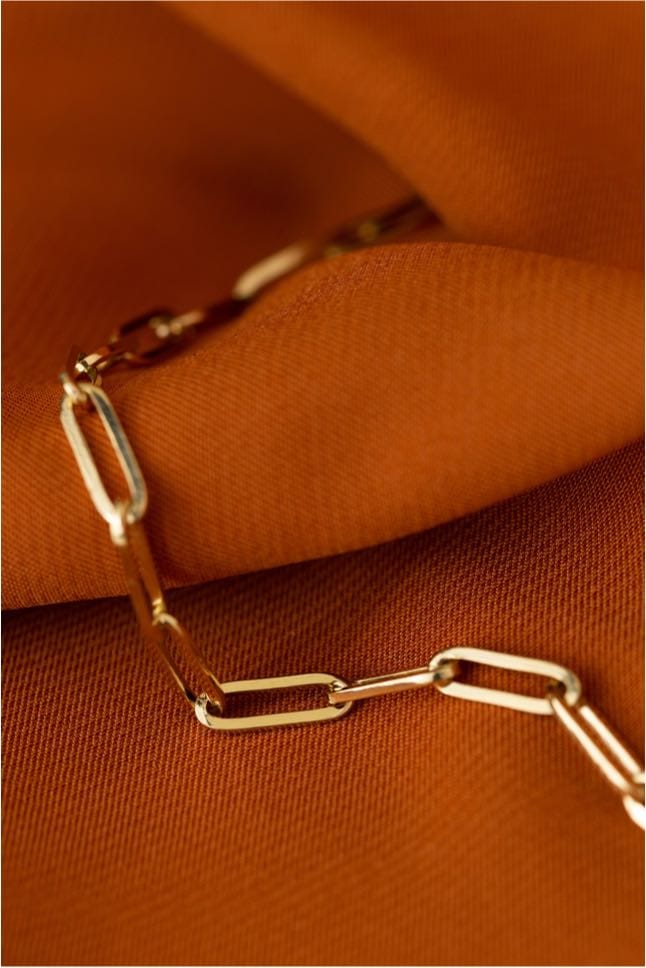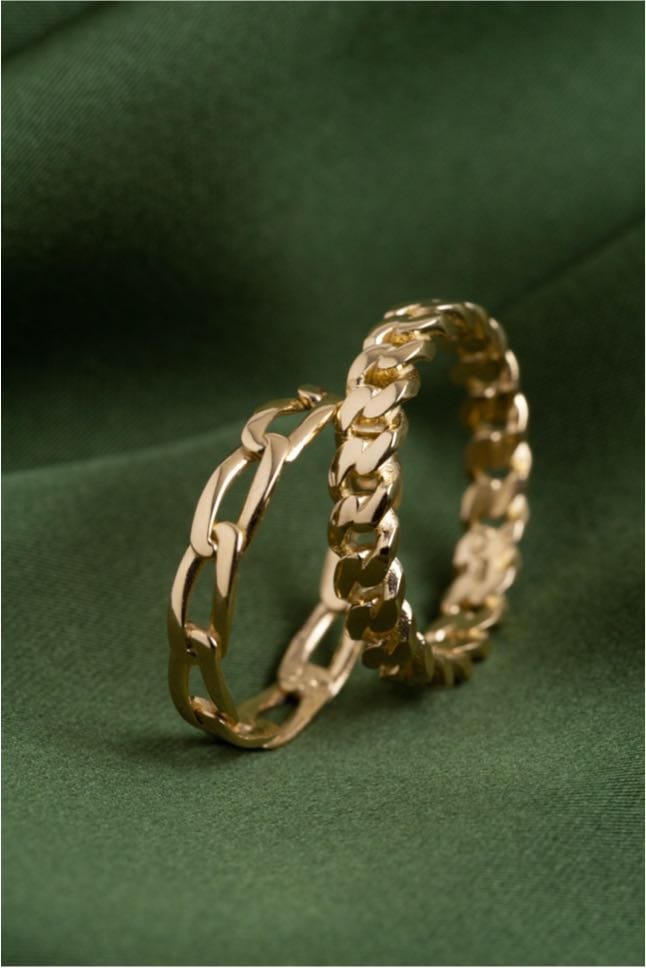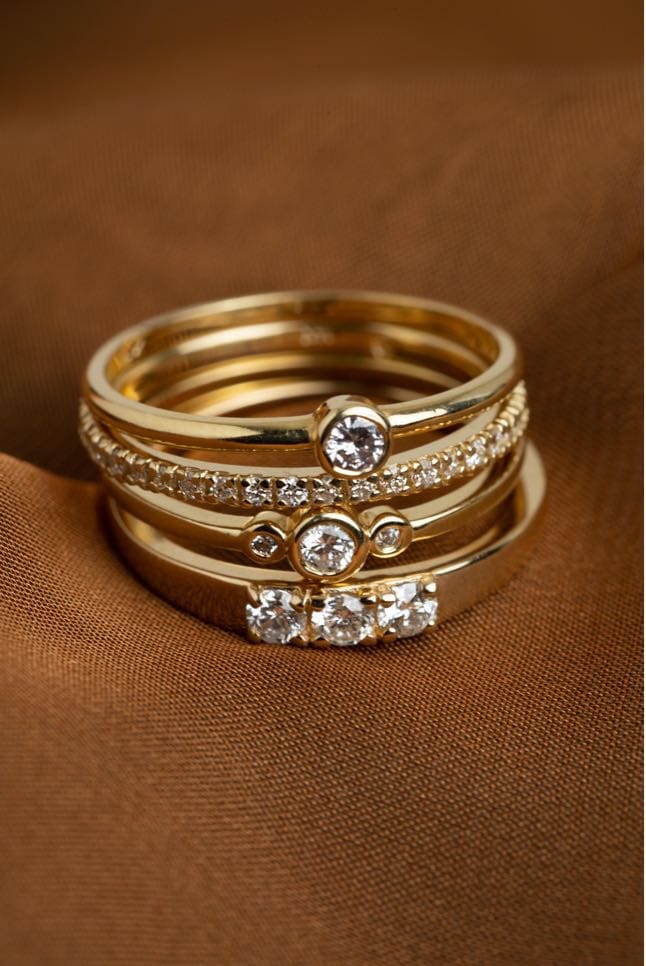Your diamonds,
your choice
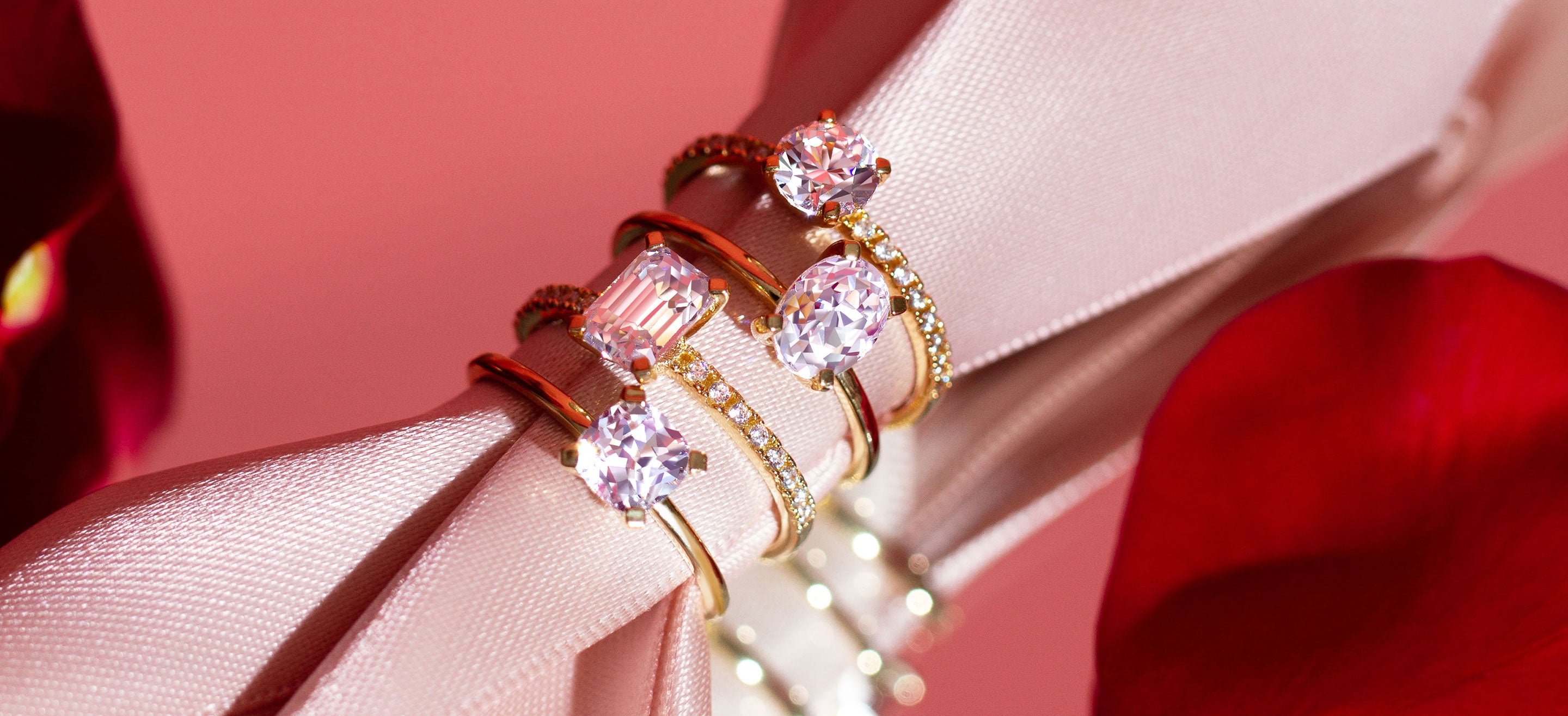
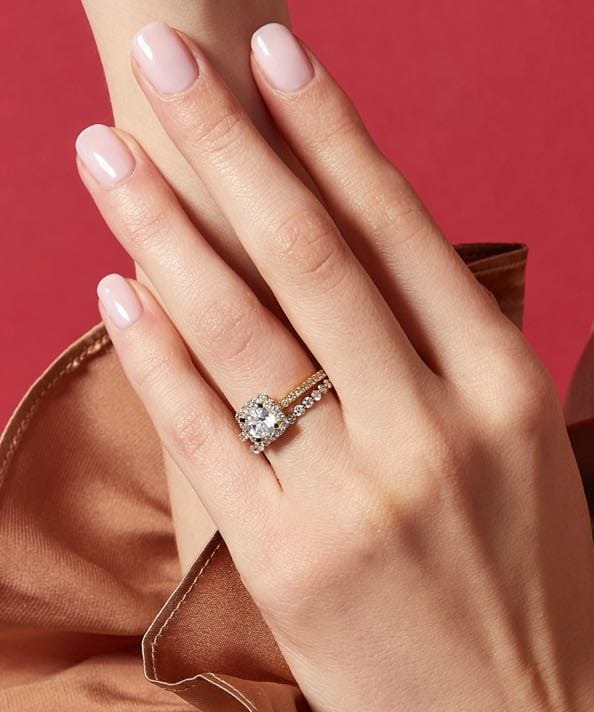
Diamonds for all
things, made your way
If you ask us, there are many things worth getting a diamond ring over: an engagement, sure, but also a promotion, a birthday, a new addition to the family. Whatever the occasion, we’ve got dozens of diamonds for it, made special just for you. Literally – the magic of having options is in your hands. Into lab grown? We have that. Natural diamonds? Got that, too. All set in our 100% sustainable 14K gold, 18K gold, or platinum of your choice, of course. So how’s a discerning gal (or guy, or neither) supposed to choose? That’s why we’re here. Consider this your go-to guide for understanding your dream diamond and making it come true.
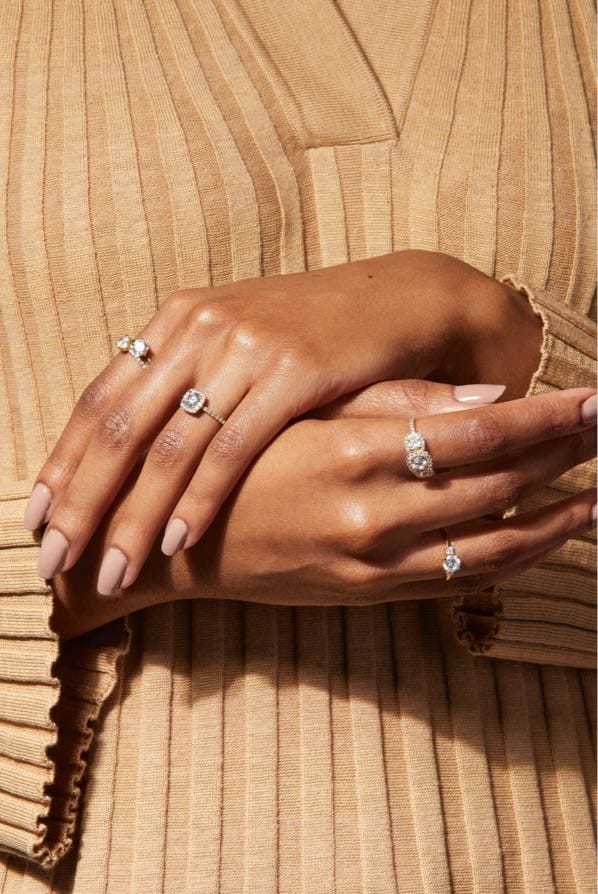
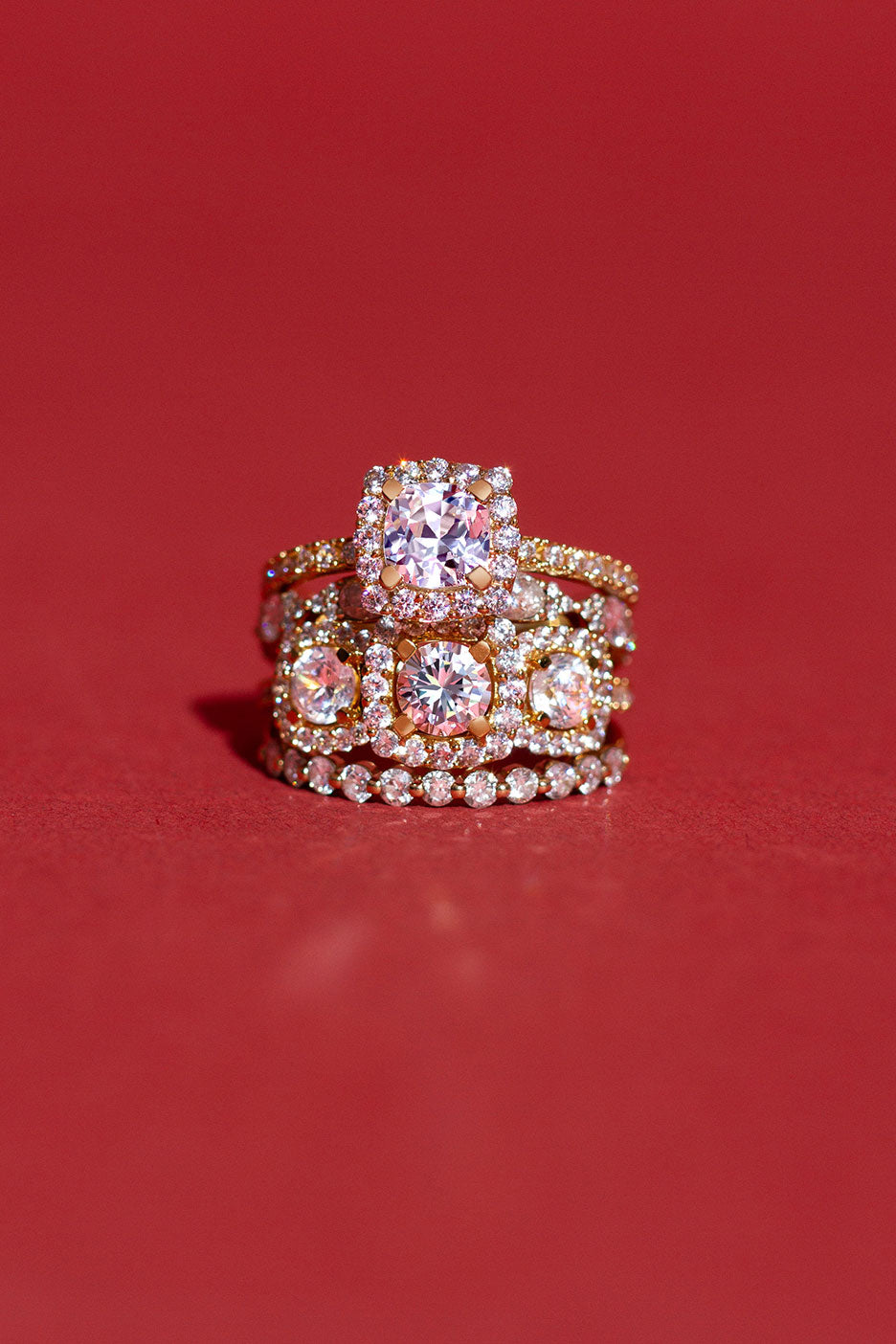
Choose your character: Lab Grown vs. Natural
If you know us at all, you know we were designed around empowerment and choice. You’re always in the driver's seat, and now it applies to your jewelry too. Since you’ve got all these fabulous diamond options, we wanted to give you the knowledge and power you need so you can decide which one is right for you: lab grown, or natural? All education, zero judgment. You do you.
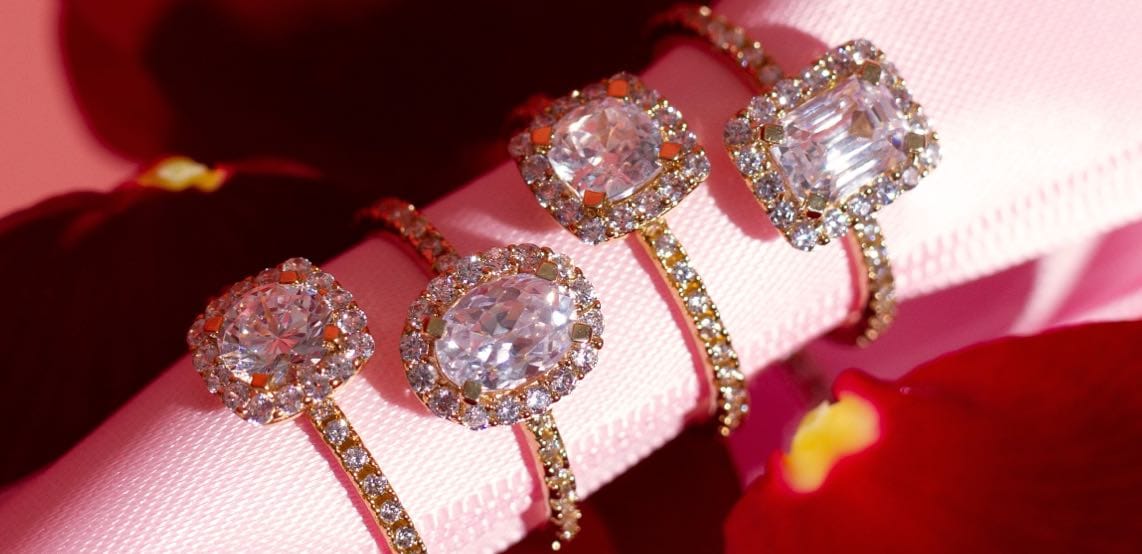
So, what's the difference?
We all know where natural diamonds come from, but what even is lab grown? It’s in the name, to start: it’s a diamond that was created in a laboratory in only 6-10 weeks using either high pressure and high heat, or a chemical process. If you had one of each in front of you, it would be virtually impossible to decipher the difference between natural and lab. Good news for all!
No matter what option you pick, rest assured that all of our diamonds come with a GIA or IGI certificate.
And, because we’re glass half full kind of people, so we’re detailing all the pros to each for you here:
Natural
-
Mined from all over Mother Earth – ethically, of course
-
Certifications matter, which is why all our diamonds strictly follow the Kimberley Process so you know you’re only getting ethical, non-conflict diamonds
-
Likely to retain or increase in value over time, in comparison to its lab-made counterpart
Lab grown
-
Looks just like the natural, organic thing – literally the human eye can’t see a difference – so no one’s going to know (wink wink)
-
No need for digging deeper into the Earth – a win for all!
-
Hands down the most affordable way to get your hands on beautiful diamonds
Choose your shape
So many shapes, too little time. We know you’re busy and don’t want to get caught up in option paralysis (oh trust us, it’s a thing), so that’s why we’re giving you the basics behind each diamond shape to help you find the one that makes your heart sing.

Know your size
A no-brainer, yes. In fact, knowing you, you probably have all your ring sizes for each and every finger committed to memory. But, for a big, hulking diamond, it never hurts to triple-check. Read up on the best way to measure your finger and calculate your ring size.
Our
materials
We’ll be the first to admit that we are Picky with a capital “P,” so you can bet that our materials are world class. No matter what you choose, it’ll do no wrong, but here’s the download on what you need to know about your choice of metal.
Know your C’s
That sure doesn't look like any math we remember from school, but when it comes to diamonds, it’s the formula for success. What we are talking about is the four Cs: color, clarity, carat & cut. If there’s anything that you absolutely need to know, it’s this. Think of it like the prettiest math formula you’ve ever seen, and lucky for you we majored in sparkle so we took the time to lay out what we know so you can ace your purchase.
All of our diamonds meet GIA’s or IGI's highest of standards and come with an authentic GIA or IGI diamond grading report that certifies the quality of your hand-selected diamond.
![[Highlight] Bestsellers](http://staging.auratenewyork.com/cdn/shop/collections/classics_750x.jpg?v=1570224556)
